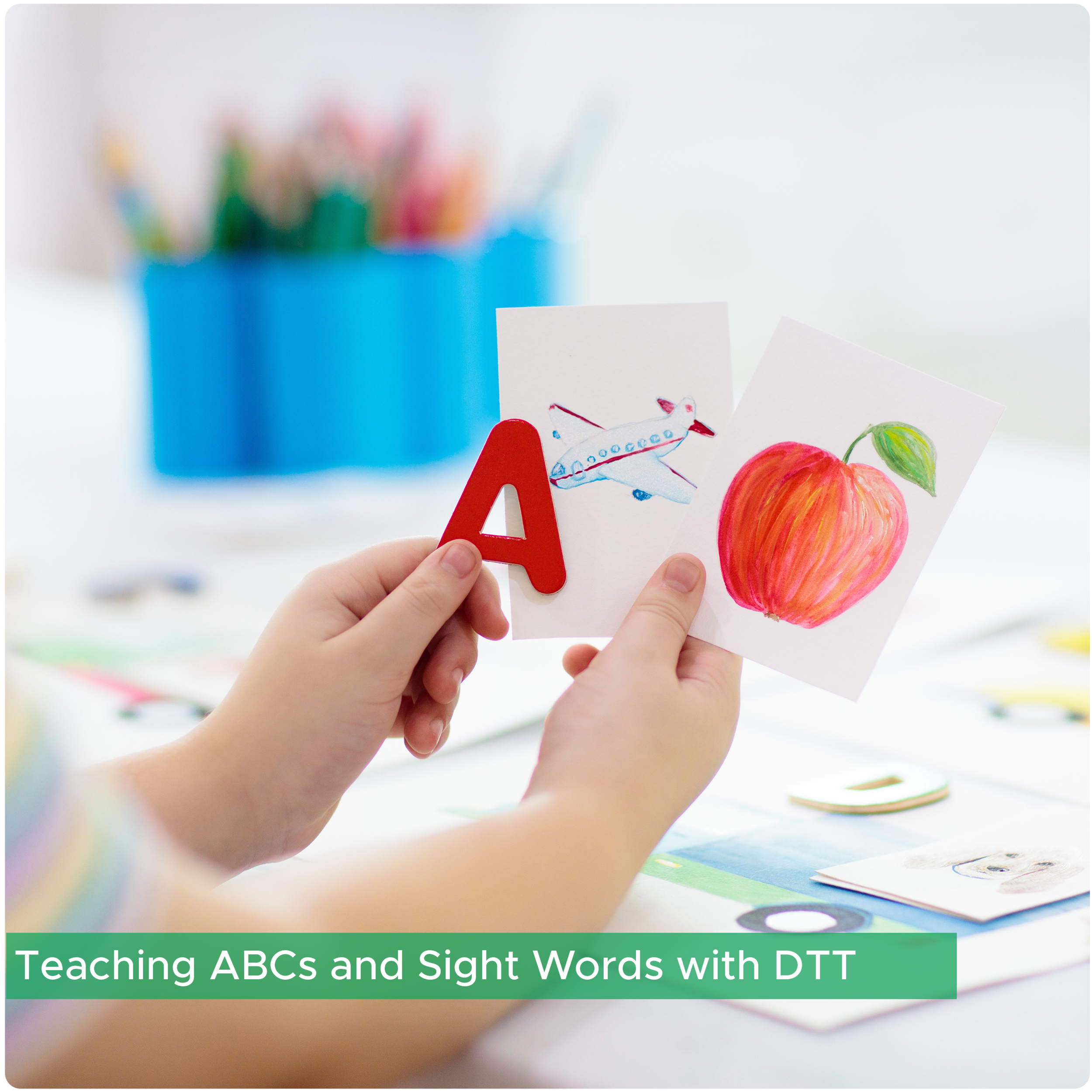Teaching ABCs and Sight Words with DTT
As the parent of a young child, you may wonder: how can a parent teach their child to recognize letters and sight words with success? Have you heard of DTT (Discrete Trial Training)? If your child is receiving ABA, then you have probably heard your Behavior Technician or Case Manager talk about DTT programs or targets that they may be working on with your child. But really, what is DTT?
DTT is a structured ABA technique that simplifies and breaks down skills into small parts which are presented in a systematic manner until current targets are mastered. New steps/targets (i.e., sight words, ABCs, Addition Facts) would not be introduced until a set number of targets have been mastered.
So if you are working on teaching your child to recognize letters, start off with 3-5 letters. Once your child masters those 3-5, add 3 more and rotate the new letters with the ones already mastered. This sequence would continue until your child masters all 26 letters. The same strategy can be used for teaching sight words and math facts.
Just a few things to keep in mind:
Ensure that the skill you are teaching is age appropriate
You know your prerequisite. This means you teach the child to first identify the letters and then once they have mastered the skill in identification (receptive), you can move to labeling (tacting) and lastly to answering questions or filling in the blank (intraverbals)
Use reinforcers and space out your teaching segments.
DTT sessions should be short and sweet, meaning you don’t want to drill your child with identifying ABC’s for 30-45 minutes…this will be frustrating for both of you, and you may accidently punish a skill you want to build. A good teaching session could be 3-5 minutes, with no longer than 10 minutes. You can do this multiple times a day.
Elizabeth Gudiel, M.A., BCBA
Clinical Director, Salt Lake City

